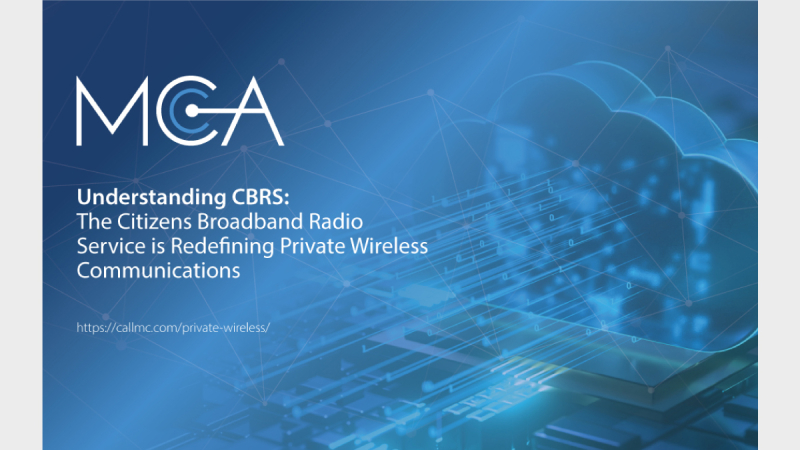
A Comprehensive Guide to Citizens Broadband Radio Service
In our rapidly evolving data-centric world, data access has become as essential as traditional utilities like power and water, often referred to as the "fourth utility." As organizations increasingly rely on fast, secure data access, the U.S. Federal Communications Commission (FCC) has authorized the use of Band 48, known as the Citizens Broadband Radio Service (CBRS), to meet these growing needs.
What is CBRS?
CBRS is a 150 MHz spectrum in the 3.5 GHz band, specifically from 3550 to 3700 MHz. Previously underutilized, primarily by federal government radar and a few satellite receivers, this band is now open for broader use due to the increasing demand for more spectrum to accommodate new mobile users. The FCC has re-purposed CBRS for shared wireless access, using a novel three-tiered spectrum-sharing framework:
- Incumbent Access: This top tier is reserved for current users like the Department of Defense and U.S. Naval Radar operations, ensuring they receive permanent, interference-free access.
- Priority Access: The middle tier, available through auctioned Priority Access Licenses (PALs), offers limited renewal rights for organizations needing guaranteed spectrum.
- General Authorized Access (GAA): The lowest tier is open for general use, allowing access to the remaining spectrum not occupied by higher-tier users.
Managed by a Spectrum Access System (SAS), this framework ensures that higher-tier users are protected from interference, while maximizing efficient spectrum use across all tiers.
Benefits of CBRS for Various Organizations
CBRS enables private LTE networks, enhancing coverage and capacity across various sectors. Here’s how different tiers benefit from CBRS:
- Tier 1 - Incumbents: These users, including federal entities and satellite stations, enjoy protected access without interference from other tiers.
- Tier 2 - Priority Access License Holders: Businesses and rural providers can secure reliable spectrum access through PALs, subject to FCC's substantial service requirements.
- Tier 3 - General Authorized Access: Open to all, this tier allows businesses and individuals to utilize available spectrum without a license, although subject to availability and lower priority compared to PAL holders.
Transforming Commercial Communications with CBRS
CBRS significantly enhances commercial communication capabilities by providing publicly accessible broadband spectrum for the first time. This development lowers the barriers for businesses to create customized, private networks without the hefty cost of spectrum acquisition. CBRS promises greater efficiency compared to traditional WiFi and DAS (Distributed Antenna Systems), potentially rendering WiFi obsolete in complex commercial operations.
CBRS is particularly advantageous for supporting the burgeoning number of IoT devices that require constant, reliable connectivity. This technology enables organizations to establish a private data network at a reduced cost, fostering innovation in automation, productivity, and safety.
Industry Applications and Future Outlook
CBRS is set to revolutionize a wide array of industries, including agriculture, finance, healthcare, hospitality, manufacturing, and more. Its flexibility and lower cost make it ideal for a diverse range of applications, from in-building wireless systems to extensive industrial IoT deployments.
Despite the rapid development of the CBRS ecosystem, certain challenges like network hand-offs and integration with existing cellular services persist. However, the industry is poised to overcome these hurdles, ensuring CBRS's role as a key player in the wireless landscape.
Exploring CBRS Capabilities Further
- Enterprise and IIoT Applications: CBRS supports traffic management, capacity, low latency, and security essential for industrial IoT and enterprise applications.
- Standalone Networks: Organizations can deploy standalone CBRS networks independent of mobile operators.
- Simplified Operations: CBRS networks are less complex than traditional large carrier networks, facilitating easier deployment and operation.
- Enhanced Propagation: The 3.5 GHz band used by CBRS offers better propagation characteristics than higher frequency bands, extending coverage range.
- Out-of-the-Box Solutions: CBRS small cell solutions are plug-and-play, simplifying network setup and management.
Spectrum Sensing and Coordination
A crucial feature of CBRS is spectrum sensing and coordination, managed by the SAS. This system acts like an air traffic controller, ensuring that CBRS devices operate without interfering with higher-priority users. With certified administrators like CommScope and Google, the SAS system authorizes and manages CBRS device operations to maintain a harmonious multi-tier environment.
Navigating the Future with CBRS
As CBRS continues to mature, its potential to reshape enterprise connectivity and support next-generation applications is immense. For organizations looking to leverage this innovative technology, the journey towards a more connected, efficient, and secure operational environment is just beginning.
